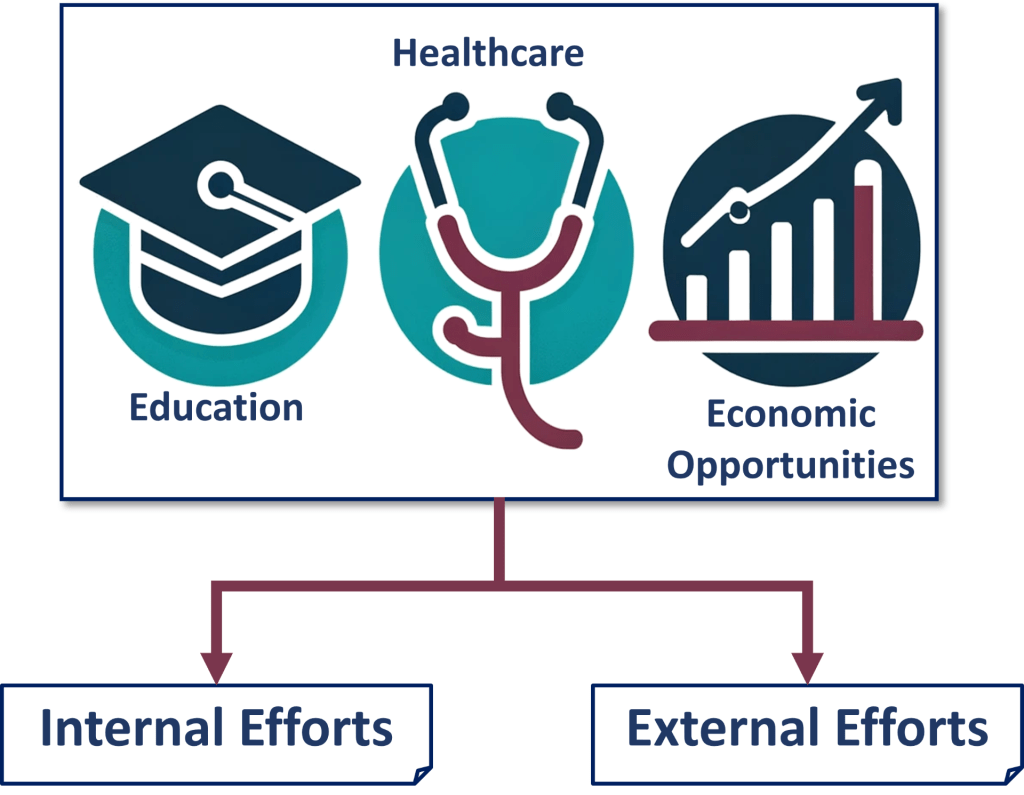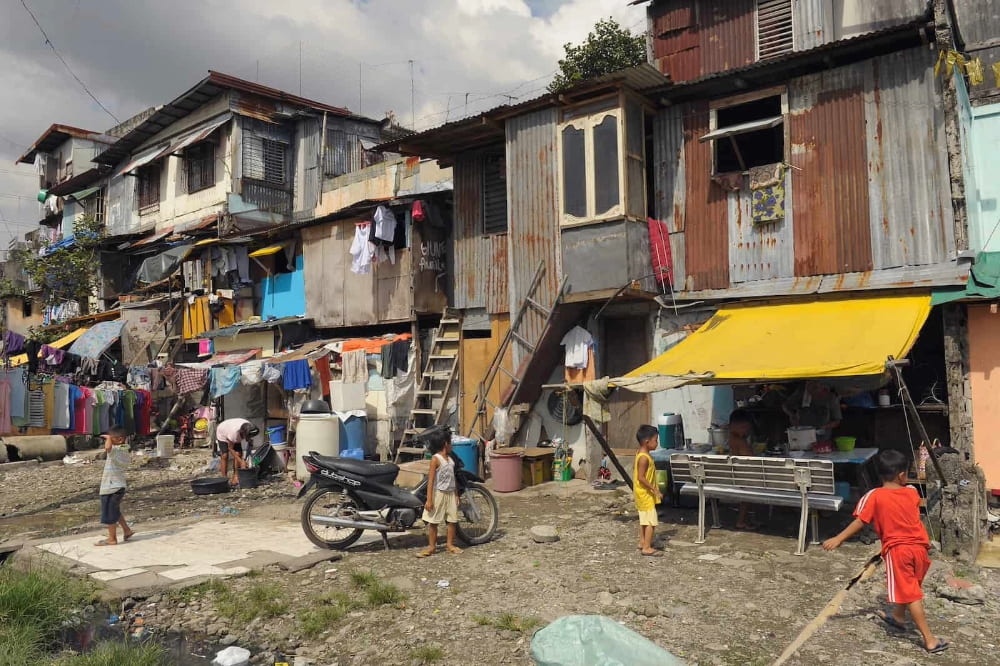Through strategic partnerships and targeted interventions, we can dismantle the barriers of global poverty, unlocking a future where prosperity is shared by all.
The Global Landscape of Poverty: A Complex Challenge
Global poverty, a complex and multifaceted issue, continues to be a significant obstacle to human development and equality. It affects billions, limiting access to basic needs, education, and opportunities. Despite global efforts, poverty remains persistent, underscoring the need for a deeper understanding and more effective solutions.
Mapping Poverty: A World of Contrasts and Challenges
Our journey into understanding global poverty begins with a striking global map visualization, where a spectrum of colors from intense blues to intense reds illustrates the varying levels of poverty across nations. This visual disparity is profound: regions awash in blue signify lower levels of poverty, while those in red reveal the depth of poverty’s grip.
Augmenting this, our bar chart analysis provides a comparative view of average poverty rates by country, underscoring the regional differences and highlighting areas where the challenge is most acute.
Blueprint for Change: A Holistic Approach to Poverty Alleviation
Tackling poverty requires a comprehensive approach, one that addresses its root causes and provides sustainable solutions. This involves not just short-term relief, but also long-term strategies aimed at systemic change. Key areas of focus include improving access to quality education, ensuring healthcare availability, and creating economic opportunities through job creation and support for small businesses.
Dual Dynamics: Local Action, Global Support in Poverty Reduction
In grappling with the challenge of how less affluent regions can embark on poverty reduction, we see a dual approach at play.

Internally, nations with scant resources can reassign budgeting towards essential sectors such as education, health, and economic infrastructure. Even modest investments in primary education, for instance, can generate long-term returns in lifting communities out of poverty.
Externally, the role of international aid is paramount. Support from developed countries, global agencies, and NGOs can provide the necessary springboard for initiatives that are beyond the financial reach of struggling regions.
Paths to Progress: Success Stories in Poverty Reduction
To demonstrate this, our trend line visualization spotlights five countries – China, Belarus, Thailand, Pakistan, and Azerbaijan – as examples of nations that have successfully reduced their poverty levels over the years. These trend lines offer a narrative of progress and hope, suggesting that with the right mix of policies and support, the trajectory of poverty can indeed be reversed. This validation is not just in numbers but also in the improved quality of life and increased opportunities for their citizens.
Roadmap to Resilience: Strategies for a Poverty-Free Future
As we conclude our exploration, it’s clear that while the challenge of poverty is formidable, it is not insurmountable. With a global commitment to targeted, data-driven strategies, we can address the diverse facets of poverty more effectively. Our recommendations are clear and focused:
- Prioritize Quality Education: Education is the key to unlocking potential and catalysing change. By ensuring access to quality learning, we open doors to opportunities and development.
- Accessible Healthcare for All: Emphasize prevention and treatment in healthcare to ensure it is universally accessible. Good health is a foundation for prosperity and progress.
- Targeted International Aid: Direct international aid strategically to build sustainable capacities where they are most needed.
- Harmonize Cross-Sector Policies: Align policies across various sectors to create a cohesive and comprehensive approach to eradicating poverty.
- Share and Learn Globally: Collaborate and share successful strategies on a global scale. Learning from each other’s experiences is vital in this collective endeavour.
These recommendations are steps towards a world where poverty is a thing of the past, and prosperity is within everyone’s reach.
Together, we can advance closer to achieving Sustainable Development Goal 1: No Poverty, creating a world where everyone has the opportunity to thrive.

0 Comments